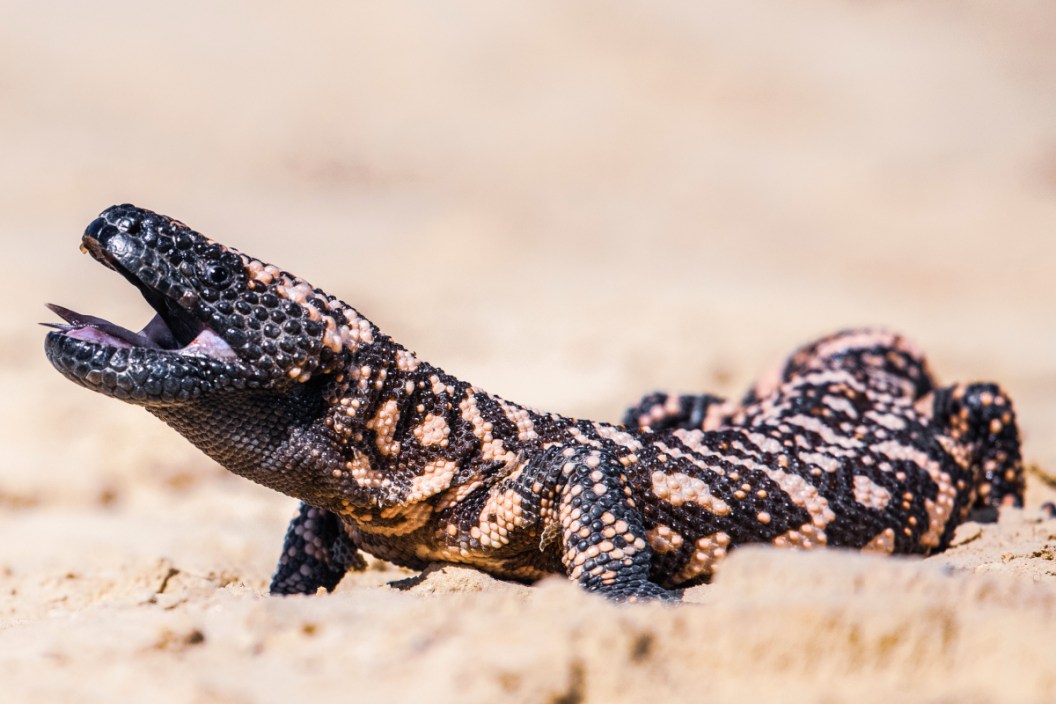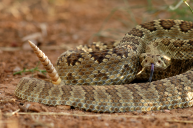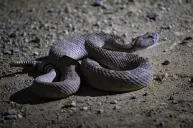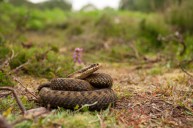The gila monster is a rare venomous lizard.
North America is home to many strange and wonderful creatures, although many people rarely encounter some of them. That is the case with the gila monster, or Heloderma suspectum, as it is known in scientific circles. This reptile is the only known venomous species of lizard in the United States.
Brilliantly colored in orange and black, there is no mistaking this lazy creature that is native to the deserts of the southwest. It gets its name from Arizona and New Mexico's Gila River Basin.
Today we will look at this interesting creature in depth and answer some of the Internet's most burning questions about the sluggish lizard with an extremely painful bite.
What does a gila monster look like and how big do they get?

The gila monster is easy to identify thanks mostly to their coloration. The head is mostly black. The body is a red or orange color and has a banded or spotted appearance thanks to black bars or spots over the length of the body. While many lizards have a streamlined and thin appearance, gilas are stout and their tail often looks stubby and fat compared to the tail of other lizards, such as iguanas. The legs are muscular and clawed, perfect traversing for the hot, dry desert environments this creature calls home. They can also use them to climb trees and cactus with ease. Unlike a snake, the gila has pronounced, bony, bead-like scales over much of its body. Of special note here is the large, forked tongue that this lizard uses to analyze the world around it and locate prey items.
This is the largest lizard here in the United States. The average size of a gila monster is usually between nine and 14 inches. However, it is worth noting that there are also unconfirmed reports of these lizards growing much larger than that. In 1881, the newspaper the Tombstone Epitaph reported that a 27-incher with a body weight of 35 pounds was captured near the famous boomtown. Again, this report is totally unconfirmed other than a vague story. It may simply be another crazy tale told by a drunken cowboy around a campfire. Hatchlings are only about six inches long.
Most zoos, state and federal agencies who have information about these lizards online list them as topping out around the 14-inch mark. The two subspecies of the greater helodermatidae family, the banded gila monster (heloderma horridum), and the reticulated gila monster, have a similar appearance and size. In fact, most agencies do not seem to differentiate between them.
What do gila monsters eat?
These lizards are slow and sluggish, but they are carnivores and many creatures smaller than them are on the menu for dinner. Their tail is usually a good indication of how recently they have had a meal. These creatures store fat in their tail. The fatter the tail, the more likely it has been feeding lately.
Small mammals like mice are almost always on the monster's menu, but they have been documented to eat other lizards, birds, insects, arachnids and more. Like many lizards, they are also opportunistic egg eaters if they can find them. Some gila monsters may even scavenge carrion.
One other interesting fact about the gila monster's diet is how infrequently it eats. When it does eat, it is usually a huge meal that can carry the animal for months before having to feed again. Like a snake, a gila monster swallows its meals whole like a snake..
Are gila monsters dangerous?
As we have already mentioned, the gila monster is one of only a few venomous lizards on earth. The only other one in North America is the Mexican beaded lizard, the gila's also-venomous cousin. Unlike a rattlesnake or other venomous serpent, the gila does not have fangs that inject this venom. Instead, venom glands produce the toxic substance in the lower jaw. They distribute the venom through a chewing action after one of the lizard's grooved teeth punctures the skin of the victim.
Unlike many snake species, there is no antivenom for a gila monster bite. Anyone who experiences one is encouraged to seek medical attention however as the animal's venom may worsen certain pre-existing medical conditions. but it is worth noting that fatal bites are exceedingly rare. According to most reports, there has not been a fatal bite in almost 90 years. So, a gila monster can kill you, but the odds it happening are rare.
Even so, you still do not want to get bit by this lizard. Just watch the video above of nature YouTuber Coyote Peterson when he was bitten accidentally by this species. Once the venom hits his bloodstream, he advises his cameraman to stop recording, something Coyote rarely does. He later described it as the most painful animal bite he has ever experienced.
There is an interesting twist to gila monster venom in that scientists have discovered many medical applications for the chemicals found in it. They have been experimenting with treatments with utilizing parts of the venom to treat Type 2 diabetes and even some cancers. Who would have thought such a dangerous animal could help save lives?
Are gila monsters endangered?
One not so fun fact about the gila monster is that they are listed as threatened by the IUCN, and they have been under legal protection everywhere they are found for some time now. Some people like to keep them as pets and international trade of these lizards is strictly regulated via the CITES multilateral treaty.
What is the life span of a gila monster?
Like many lizards, gila monsters live a tough existence out in the desert scrub of harsh places like the Sonora desert, rarely being found in the cities. While the environments of places like southern Nevada and southwestern New Mexico may be inhospitable to many species, the gila monster thrives in them. In captivity, gila monsters tend to live around 20 years, taking three to five years to mature. However, a few specimens have lived 30 to 35 years in captivity.
Where do gila monsters live?
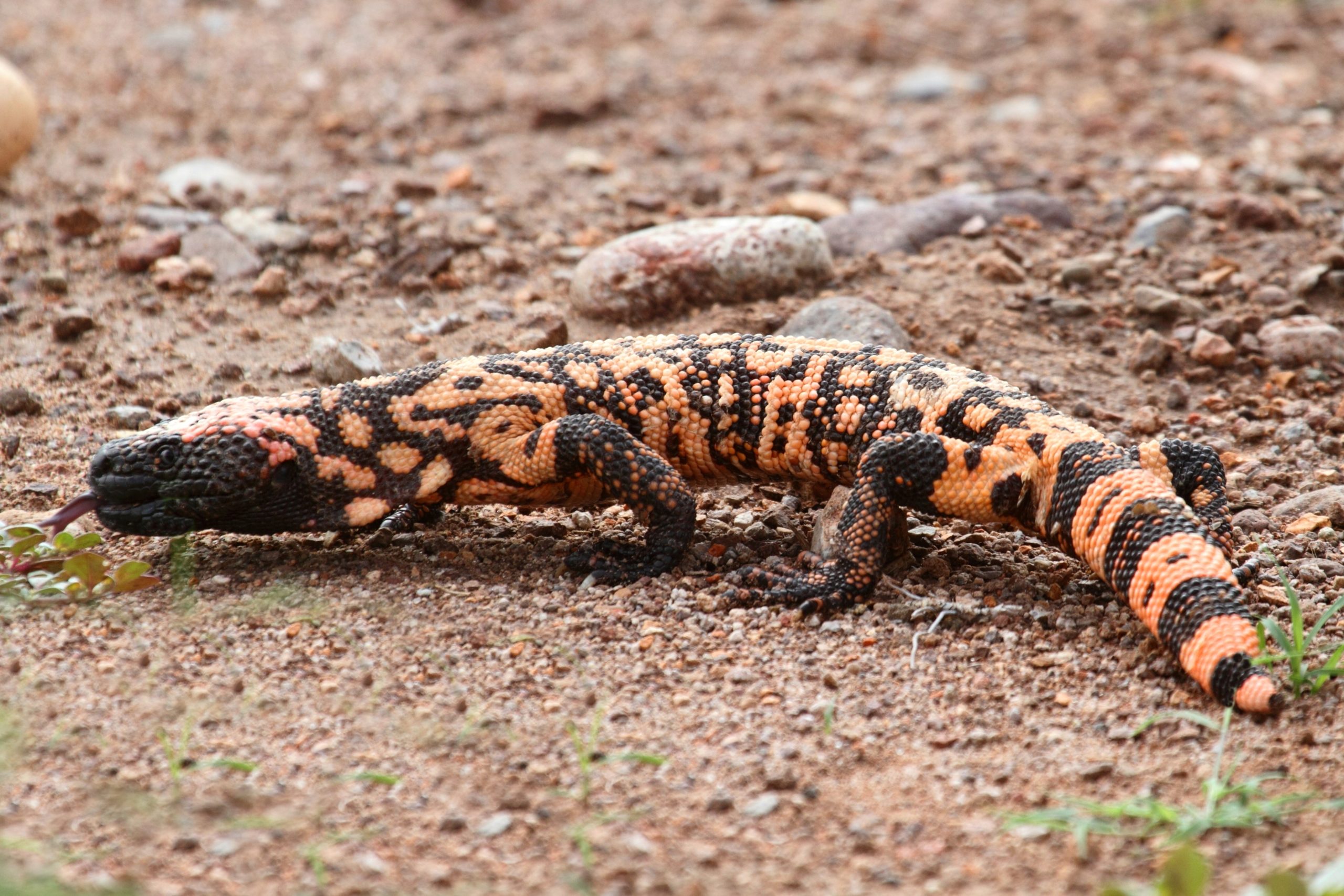
These lizards do have a "near threatened" conservation status from the IUCN and their numbers have diminished in some areas over the years. Mostly due to misunderstandings from humans and a loss of habitat. Gilas are protected in Arizona, so leave them alone. The southwestern United States is the primary place these animals call home. Their range is isolated to just six states and northwestern Mexico. The most likely place you will find them here in the United States is the Sonoran desert of Arizona. They are often encountered in both Saguaro and Grand Canyon National Parks.
Aside from Arizona, which makes up the bulk of their range, gila monsters are also found in New Mexico, Nevada and parts of California. They are also sometimes sighted in southwestern Utah. It is worth noting that encounters with this lizard are somewhat uncommon. Gila monsters like to dig elaborate burrows underground and they spend the bulk of their lives there. Most of their surface activity is focused on either eating or mating.
The gila monster is a truly fascinating beast of the southwestern United States, but they are not dangerous unless provoked. Our best advice is to observe this creature at a distance. If left alone, it will leave you alone too.
For more outdoor content from Travis Smola, be sure to follow him on Twitter and check out his Geocaching and Outdoors with Travis YouTube channels.
NEXT: THE AXIS DEER AND HOW THEY'RE IMPACTING PARTS OF THE UNITED STATES
WATCH
